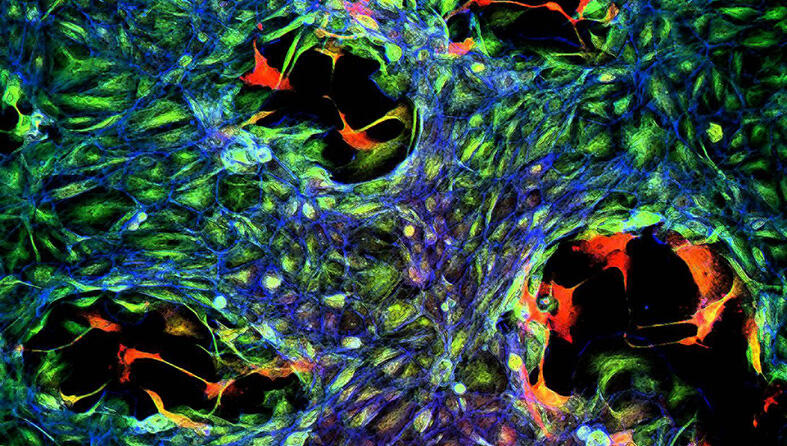Past research into cancer biology

120 years of life-saving discoveries
Our scientists have been at the forefront of cancer research since 1902.
Thanks to you, we’ve come so far. And we will go much further.
Together, we will beat cancer.
Our milestones
Our scientists have made vital discoveries about cancer biology, a crucial step in finding new and better ways to treat, diagnose and prevent cancer. Below are a few of our most important discoveries.
1983 – Our researchers identify a gene called NRAS which, when faulty, causes cancers including lung, bowel and pancreatic. The team go on to discover how changes in this family of genes cause cancer.
1984 – Our researchers uncover the role of a molecule called EGFR. Changes in this molecule are linked to many types of cancer. This finding kick-started research into targeted treatments, and today patients are living longer due to treatments that block EGFR.
1987 – We discover the location of an important gene called APC which, when faulty, raises the risk of bowel cancer. Thanks to this work, people who have a family history of bowel cancer can be offered genetic tests to look for faults in this gene, and make informed decisions about their health.
2003 – We discover a new gene linked to breast and ovarian cancer, which is key to understanding how and why these cancers develop. Called EMSY, this proved to be the ‘missing link’ between types of these cancers that can be passed through families and those that aren’t.
2010s – Our scientists reveal that one way a rogue protein called K-ras helps lung and pancreatic cancer grow is by working with a ‘detox’ molecule that normally protects our cells. Then in 2015 we find that faulty versions of K-ras hijack vital self-destruct switches in cells, making these cancers more aggressive. Faults in the KRAS gene are found in many cancers, so understanding how it causes the disease is crucial for finding new treatments.
1923 – We support some of the earliest research into the treatment of cancer with radiation, including awarding our first grants for the purchase of radium to treat cervical cancer.
1948 – One of our scientists discovers new chemicals based on mustard gas, leading to the development of three important chemotherapy drugs: chlorambucil, melphalan and busulfan. These drugs are still used today to treat some leukaemias and other blood cancers, and have helped save the lives of countless patients.
1964 – Our scientists discover the first human cancer virus; Epstein-Barr virus (EBV). The virus causes some types of lymphoma and cancer of the nasal cavity, and our researchers are now working on vaccines to treat these diseases.
1977 – Our early research into bone marrow stem cells led to many important discoveries, including how they replenish our blood cells throughout life and how cancers of the blood, such as leukaemia and multiple myeloma, develop. This research has helped develop better treatments for many types of cancers, boosting survival.
1999 – We help show that the human papillomavirus (HPV) causes the vast majority of cervical cancers worldwide, overturning previous studies that had underestimated the link.
2017 – Results from the first 100 patients taking part in our ground-breaking study, TRACERx, reveal that the genetic chaos found within tumours can predict some patients' outcomes. And the researchers also showed that a blood test can detect early warning signs that lung cancer is coming back after treatment, which might help doctors stay one step ahead of the disease.


